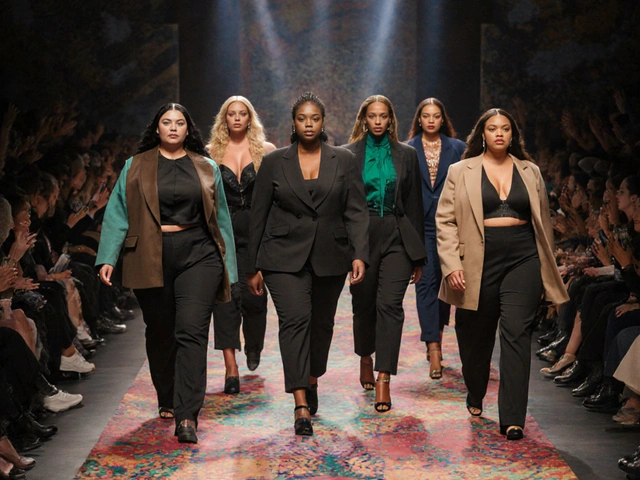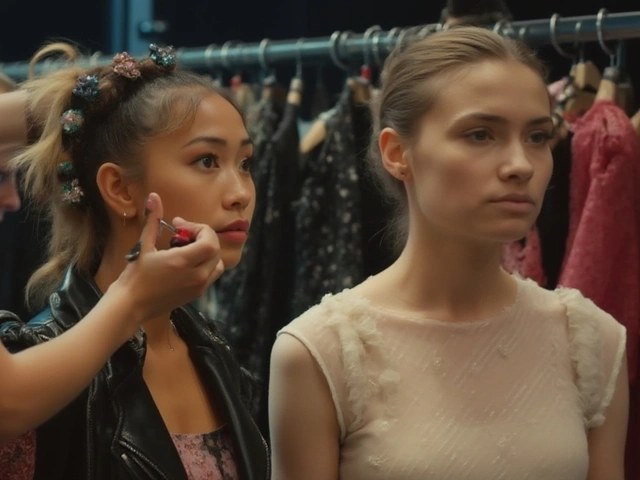Ever wondered what happens after you fill out a model job application? It’s more than just strutting in front of a camera or nailing a runway walk. Breaking into modeling means figuring out how the whole process actually works—casting calls, agencies, contracts, and more. If you’re dreaming of seeing your face in a campaign or on a magazine cover, you’ll want to know how the gears turn behind the scenes.
For starters, every model has to face casting calls. That’s where you line up with others, sometimes hundreds, all hoping to get spotted for the same gig. Think of it like a group job interview—except everyone is probably just as nervous as you. If the casting goes well and you get a call back, don’t rush into things. That agency or client might want a quick decision, but take your time to understand what’s being offered.
Contracts are a big deal here. Some are short and simple; others are stacked with pages of legal jargon. Always read every line, watch out for sneaky details—like if they want exclusive rights or take a crazy-high cut of your pay. If you’re confused, get advice from models who’ve been there or even a real lawyer. No one wants a nightmare story about working for free or losing out on earnings.
- Key Steps in the Model Job Process
- What to Expect at Casting Calls
- Working with Model Agencies
- Understanding Modeling Contracts
- Common Pitfalls and How to Avoid Them
- Pro Tips for Landing and Keeping Model Jobs
Key Steps in the Model Job Process
If you’ve ever tried to crack into model jobs, you know it’s not just about getting lucky. There’s a real step-by-step game plan that helps you go from hopeful newcomer to actually booking gigs. Here’s how it usually plays out:
- Build Your Portfolio: This is your calling card. Agencies and clients want to see a range—headshots, body shots, maybe a lifestyle or fashion look. You don’t always need pricey photographers starting out. Sometimes local photographers or even talented friends can help you shoot strong photos that work.
- Apply to Agencies: Research legit model agencies—not the ones charging you upfront. Apply on their websites or when they host open calls. Most top agencies look for natural photos and basic stats like height, age, and measurements.
- Attend Casting Calls: Once an agency’s interested, or you spot an open casting on social or job boards, you’ll head in. Bring your portfolio and simple clothes (like fitted jeans and a tee). Remember, first impressions really count here.
- Call-Backs and Interviews: Sometimes you make it through the first round and get a call-back. That’s usually a sign they see potential. You might be asked for a test shoot or to meet a client directly.
- Negotiate and Review Modeling Contracts: Before any work, you’ll get a modeling contract. Don’t skim—check the details: commission rates, contract length, exclusivity, and what the agency expects from you. Some contracts ask for up to 20% commission on all jobs, which is normal in places like New York or London.
- Book the Job and Show Up Prepared: Once you’re booked, you’ll get all the details—date, location, wardrobe, and any special instructions. Bring your essentials: portfolio, ID, and even your own basic makeup or shoes if requested.
- Get Paid: Payment usually comes from the agency after the client pays them. It can take 30 to 90 days depending on the job and location. Always save your invoices and double-check amounts so you’re not shortchanged.
The whole model job process isn’t as mysterious as it looks, but each step matters. Messing up on photos or missing contract fine print can hurt your chances fast. Stay organized, stay sharp, and don’t be afraid to ask questions at any step.
| Step | Common Pitfall | Tip |
|---|---|---|
| Portfolio | Too many highly edited photos | Keep it simple and natural |
| Agencies | Paying upfront fees | Choose agencies that earn when you do |
| Casting Calls | Arriving late or underdressed | Be on time and go for clean, fitted looks |
| Contracts | Not reading fine print | Ask questions before signing |
| Payment | Forgetting to invoice or follow-up | Stay on top of your paperwork |
What to Expect at Casting Calls
Walking into a casting call for the first time can feel like stepping into the unknown. When agencies or brands announce these events, expect a huge mix of people—all shapes, sizes, and backgrounds—lining up for the same shot at getting picked. It’s not just about looks. Things like personality, presence, and how you handle yourself count just as much. Sometimes, the room might have a panel of up to five people—think creative directors, photographers, and the client’s brand rep. Other times, it’s just a single agency staffer with a camera and a notepad.
Here’s what usually happens at a typical model job casting call:
- Sign-in: You’ll often fill out a form or hand over your comp card (basically a mini-model resume).
- Photos: Some castings snap a set of basic photos (called digitals or polaroids). This is usually you standing in front of a plain wall, no filters, just the real you.
- Measurements: Expect a quick check of your stats—height, waist, hips, chest, and shoe size. Don’t try to fudge these numbers, seriously.
- Walk or Posing Test: For runway jobs or events, they’ll want to see you walk. For commercial work, be ready to switch up your expressions or poses on the spot.
- Short Interview: They may ask about your interests, past experience, or even quirky questions to see your personality.
Don’t bring your whole wardrobe with you. Agencies usually want a simple and clean look—think plain jeans, a well-fitted t-shirt, and neutral shoes. Keep makeup and hair natural. Getting too fancy can actually hurt your chances since clients need to imagine you in their own styles.
If you’re worried about competition, you’re not alone. At some big brand castings in cities like New York or LA, up to a thousand people show up for just a handful of spots. That’s less than a 5% callback rate on average, according to a survey of casting directors.
| Location | Average Applicants | Callback Rate |
|---|---|---|
| New York | 900 | 4% |
| Los Angeles | 750 | 5% |
| London | 600 | 6% |
It’s normal not to hear back right away. Sometimes you’ll know in a day, sometimes weeks, or not at all. Don’t take it personally—clients are looking for a specific vibe or look each time. Every time you go, it gets easier and you learn the ropes. If you don’t land the gig, you’re still building experience. Treat every casting as practice for the next one.
Working with Model Agencies
Getting noticed in the world of model jobs usually starts with a good agency. Agencies act like talent scouts and job managers—your front seat to castings, gigs, and legit contracts. Once you sign with a trusted agency, you have someone pitching you to clients, handling negotiations, and making sure you’re safe.
Legit model agencies never charge you up-front just to represent you. They’ll make money only when you land a paid job and get a cut, usually around 20%. If someone promises quick fame for a fee, that’s a red flag.
- Portfolios: Most agencies ask for simple snapshots. They don’t expect pro headshots right away—clear, natural pics (in good lighting, basic outfit) are perfect for starts.
- Scouting: Some agencies scout talent online or even in public places. It’s not just about looks anymore; unique personalities and diverse appearances get noticed just as much these days.
- Open Calls: Look out for open call days. Bring your A-game and basic info (age, height, contact, and some recent photos).
- Contracts: Don’t rush. Read everything. If they want you to sign something, take time to check it out—look for exclusivity clauses, how long you’re tied to them, and what’s expected from both sides.
There are top agencies with global reach—like IMG Models, Elite Model Management, and Ford Models—but plenty of smaller boutique agencies can also get you steady work and hands-on attention. Many start small, build their book, then move on up if things take off.
| Agency Type | What They Offer | Usual Commission |
|---|---|---|
| Major/International | Big brands, global campaigns, runway shows | 15-20% |
| Boutique/Local | Direct coaching, smaller gigs, personal guidance | 15-25% |
Always be clear on fees, rights, and support. Get things in writing. The best agencies don’t just find you model jobs—they also have your back if something goes sideways. Remember, the relationship should help your career, not limit it.

Understanding Modeling Contracts
So you’ve nailed the casting and the agency slides a contract across the table. Here’s where you need to slow down and pay attention, because modeling contracts are where your rights, pay, and future jobs are decided. If you’re new, contracts can look like a wall of confusion, but let’s break it down into the basics you actually need to watch for.
First off, there are a few main types of contracts in the model jobs world:
- Exclusive contracts: You work only for one agency—nobody else. Sounds secure, but you could miss other gigs.
- Non-exclusive contracts: You can take jobs from different agencies. More freedom, but be careful not to double-book yourself.
- One-time or job-specific contracts: Deal just for a single gig, like a photo shoot or fashion show.
Key things to check before you sign:
- Commission rates: Agencies take a cut, usually around 10-20%. Any more, and it’s time to ask questions.
- Payment terms: Will you get paid after the job, or wait months? Make sure it’s spelled out.
- Length of contract: Are you locked in for a year, six months, or open-ended?
- Exclusivity: Does the contract block you from other gigs or agencies?
- Usage rights: Can the client use your image forever, or just for one campaign? Is your face on billboards, online ads, or who knows where?
If you see words like "perpetual" or "in all media," tap the brakes. Those mean your image could end up somewhere you didn’t expect for a lot longer than you thought.
Here’s a snapshot of what a typical commission structure looks like:
| Agency Type | Standard Commission |
|---|---|
| Major modeling agency | 15-20% |
| Boutique agency | 10-15% |
| Online/modeling platforms | 10% |
Always ask for a copy of the modeling contract and take time to review it. Don’t let anyone rush you. If something feels off—like a ridiculous buy-out clause or no payment date—ask. Some agencies actually count on newbies not reading the fine print.
Big tip: keep everything in writing, and never agree to changes verbally. If you want to change something, make it part of the contract. Too many models run into trouble later because of handshake deals and vague promises.
At the end of the day, a clear, fair contract protects both you and the people hiring you. Read, ask questions, and remember—you always have the right to negotiate or walk away if it isn’t right. Your work and your image matter, so don’t give them away for less than you deserve.
Common Pitfalls and How to Avoid Them
The model jobs world looks glamorous, but behind the scenes, there are some traps that catch even smart people off guard. A lot of beginners jump at the first offer they get, not realizing it’s loaded with sneaky terms or even fake promises. Let’s dig into some of the classic mistakes and how to steer clear of them.
- Signing contracts without reading: It’s tempting to trust people who seem legit. But many models find themselves stuck with unfair modeling contracts—like giving up rights to their own photos or being tied to one agency for years. Always take the time to read every part. If you don’t understand something, ask! There’s no rush that’s worth risking your career.
- Paying upfront fees: Real model agencies find work for you—they don’t charge just to list you. If an agency asks for big payments for “training packages,” “portfolio shoots,” or membership, be careful. According to the Federal Trade Commission, fake agencies scammed models out of $15 million in the U.S. last year alone. Legit agencies make money when you make money.
- Unclear job details: Some casting calls seem legit but are vague about pay, hours, or where the job will happen. Insist on the details—written and clear. If you can’t get them, walk away. Getting stuck somewhere far from home with no idea about your work or pay is a headache most pros wish they’d avoided.
- Ignoring safety: Always tell someone when and where you’re going for a casting or shoot. Meet in public if possible. Most scary stories in modeling start because someone just “went along” without checking.
- Social media oversharing: Posting every casting and client name might seem fun, but clients don’t always want jobs to be public while campaigns are still a secret. Sharing too soon can get you dropped.
Here’s a simple breakdown to help you stay sharp:
| Pitfall | What to Do Instead |
|---|---|
| Paying upfront fees | Look for agencies that only get paid after you land model jobs |
| Unclear contracts | Read everything, ask questions, and get advice before signing |
| Unsafe castings | Stick to public places, bring a friend, tell someone your schedule |
| Skipping research | Check reviews, client lists, and agency licenses online |
Bottom line? If something feels off, trust your gut. The legit model jobs scene has its challenges, but you’ll be just fine dodging these traps if you stay alert and ask the right questions.
Pro Tips for Landing and Keeping Model Jobs
Getting in the door is one thing, but making your mark as a model comes down to nailing details others skip. There are a few habits and strategies that successful models swear by, and these can make a real difference whether you’re a newbie or already booking steady model jobs.
First off, always show up on time—this is a must. Casting directors and clients actually remember people who arrive early, not just those with killer looks. According to a 2024 interview in Models.com, “Reliability beats hype every time. The ones who show up ready to work are the ones we call back.”
- Build a simple, strong portfolio. You don’t need fancy filters or heavy edits; well-lit, clear images are what agencies want. Update it every few months as you gain experience or change your look.
- Keep your social profiles professional. Many bookings come through Instagram or portfolio sites. Post often, but keep it relevant. No brand wants to see wild party pics when they’re looking for their next campaign face.
- Network like crazy. A lot of model jobs come from word of mouth. Chat with photographers, makeup artists, and other models. Sometimes a casual DM or follow turns into your next booking.
- Know your contract basics. Don’t just skim it. Focus on payment terms, image rights, and agency cuts. A 2023 survey by The Fashion Law showed that nearly 48% of models didn’t understand their first contract—don’t be in that camp.
- Stay healthy, but ditch the crash diets. Sleep, water, and regular meals will keep you sharp and looking your best. Agencies and clients spot the difference.
If you want to hang onto gigs, communication is everything. Canceling last minute or going quiet on an agency can get you blacklisted fast. Always reply to emails and calls, even if it’s just to say you’re unavailable.
"In modeling, your attitude sticks with clients longer than your headshot. If you're dependable and easy to work with, you'll keep landing jobs even if you're not the tallest or the flashiest." – Jillian Murphy, agency director at Next Models
The job market changes fast. Keep an eye on trends—like brands looking for more diversity or specific styles. The best models adapt quickly and never stop learning. Want your name popping up on the call sheets again and again? Treat every job like an audition for your next one. Show up, be respectful, and give it your best every single time.








